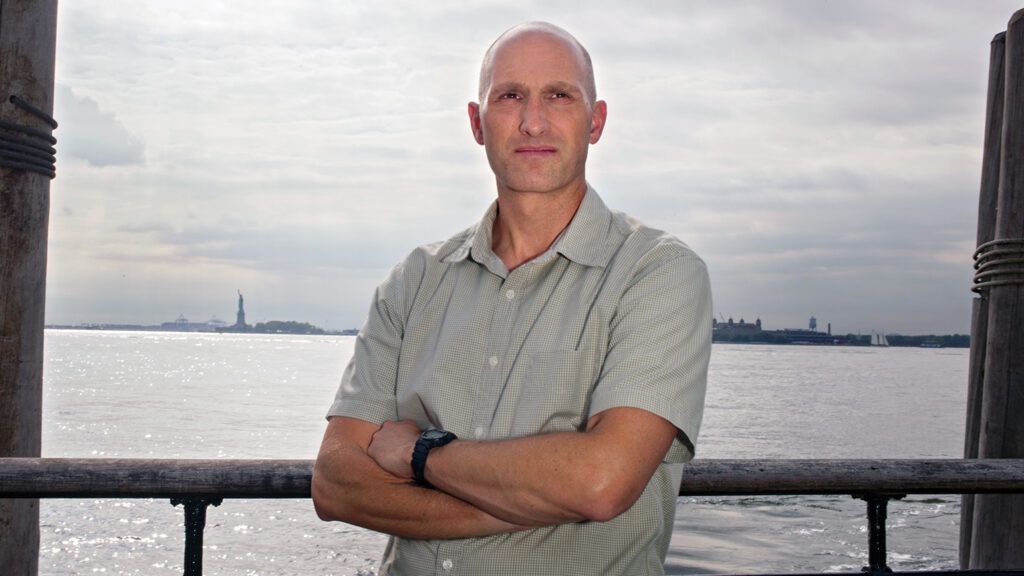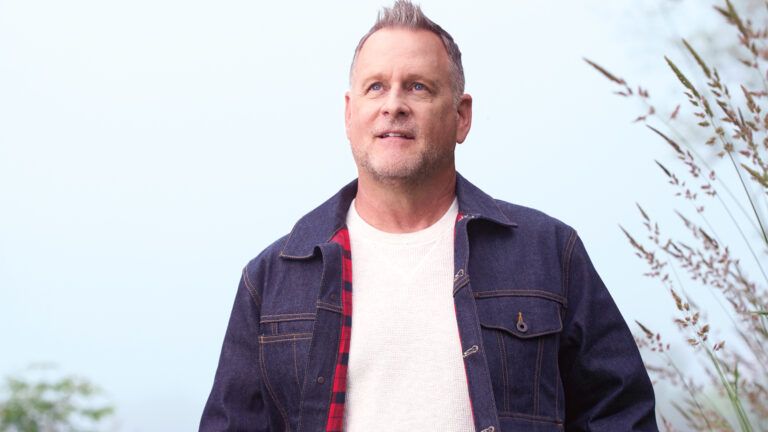April 1, 1978. The desert sun blazed through the living-room windows of my parents’ house in Rancho Mirage, California. We sat in a circle—me, my three brothers and several medical professionals. My dad had his arm around Mom on the couch. She was still in her robe and looked tiny amid the sofa cushions, fragile almost. The doctors called what we were about to do an intervention. To me it was a chance—maybe our last chance—to help Mom, Betty Ford, be herself again.
One by one, my father and brothers gave my mom specific examples of how her pill-taking and drinking had affected our family. Mom said nothing, only cried in Dad’s arms. Then it was my turn. I’d rehearsed this so many times, but listening to my mom’s sobs, I broke down too. I brushed away my tears and turned to her. I couldn’t lose my resolve now.
“You’re falling down all the time, Mom,” I said. “Remember that night you cracked your ribs and chipped a tooth? I’m so worried you’ll hurt yourself again.” I told her how it hurt my feelings when she forgot our plans or stuff I told her about my life. I told her how much I loved her. “I just want you to get better,” I said. What I didn’t realize then is that Mom wasn’t the only one who needed to go into recovery. Addiction is a family disease. And it can affect any family, even a First Family. Even my family.
Mom took a lot of pills when we lived in the White House. She had had more than her share of health problems. She was diagnosed with breast cancer six weeks after my dad assumed the presidency. Now cancer-free, she still struggled with arthritis and a pinched nerve in her neck. Doctors had been prescribing her muscle relaxants and painkillers for years.
But ever since I’d left college the year before and gotten a condo near my parents in southern California, I’d been worried. Mom was late and forgetful. She slept all the time and even when she was up, she moved as if in a fog. I started accompanying my dad to social lunches and dinners in her place. Maybe she just needs more rest, I told myself. Then one day I noticed a bruise on Mom’s knee. And then another on her arm. Before my mom met my dad and became First Lady Betty Ford, she’d been a dancer. Clumsy was the last word you’d think of to describe her. How could she have been so out of it?
I knew Mom drank. So did Dad and all their friends for that matter. A cocktail before dinner, some wine with. No one paid much attention back then to the warnings on prescription bottles about mixing the pills with alcohol. Still, I’d always thought an alcoholic was someone who lived on the street and drank whiskey out of a paper bag. Not someone like my mom. I only knew that lately I didn’t want to be around her. Sometimes I looked at her when she had that faraway expression and inside I screamed, Where are you? I missed my involved, energetic mom—and I wanted her back. At night, I turned my questions to God. How do I make her well again? Show me what to do!
It was my OB-GYN—Dr. Joe Cruse—who suggested an intervention. He was Mom’s doctor too and a recovering alcoholic himself. I told my dad and brothers we had to try it. Dad cut short a business trip. My brothers flew in. I was more than ready to get things out into the open. But I wasn’t prepared for the hurt, almost pleading look in Mom’s eyes after I finished speaking that April afternoon. Dad held her close and said, “We all want you to get better. Will you go into treatment?”
Mom gazed around at all of us, then nodded mutely. I sagged with relief. Dr. Cruse and I went through the house and put every pill bottle we could find into a cardboard box. A few days later, Mom entered a six-week rehab program at Long Beach Naval Hospital. I couldn’t wait for her to be cured, to be her old self again.
But like many diseases, addiction can be controlled only, not cured. In the seventies, many people thought addiction was a lack of character or morals or a mental illness. Some people still do. But addiction is a chronic disease. The brain chemistry of an alcoholic or drug addict makes it nearly impossible to stop without help. Dr. Cruse explained this to me. So did the interventionist. And I accepted it. What I found much harder to accept was that, in a way, I was afflicted too. We all were.
Two weeks after Mom went to Long Beach, I went out there to support her and encourage her along. One of the clinicians told a group of us who had family members in treatment, “You all are here because it’s not just your loved ones who have a problem. So do you.”
My defenses went up instantly. Wasn’t I the one who had pushed to get Mom help? How could I have done that if I had a problem too?
“Many of you may have been accomplices in your loved ones’ addictions, whether you realize it or not. It’s called enabling. That is the nature of the disease. All of you have gone through denial. Fear. Anger. Resentment. It’s time to start dealing with that.”
It was strongly suggested that I attend an Al-Anon meeting. I went reluctantly and slouched into a seat in the back. People began to share their stories. I found myself leaning forward. A woman who looked slightly older than me said, “Some nights I lie awake wondering if my mom is drinking. I start thinking about all these horrible things that could be happening to her.” I’ve done that too.
I kept going to meetings. And I started thinking about my relationship with my mom. She’d gotten cancer my senior year of high school. I’d been torn between wanting to assert my independence and wanting to take care of her. Her illness had made national headlines then; this time her pain was private. But I guess my need to protect her had never really gone away.
That came into sharper focus when Mom returned home from treatment. She was like a rosebud coming into bloom. Healthy and vibrant. But I didn’t trust her. No, I didn’t trust the disease. I still lay awake nights. After all, she’d covered up her addictions before. Was it only a matter of time before it all came crashing down? At least when she was drinking I knew.
Accept that you are powerless. That’s what AA had taught Mom—to turn over her sobriety to a loving God. Now Al-Anon was telling me to do the same thing. I didn’t have control over Mom’s alcoholism any more than she did. I had to allow her to take responsibility for herself. And trust God to watch out for her. Help her to stay healthy, I prayed. Help me to accept my powerlessness and trust you, Lord.
Two years later, Mom was still healthy —but restless. She started talking about opening a rehab clinic with her friend, Leonard Firestone, also in recovery. One afternoon Mom and I were having tea together in the same room where my family had confronted her. “Susan, I have to ask you something,” she said. “There’s been some talk about naming the center after me. I want you to tell me honestly, would that embarrass you? Or the children you’ll have someday? Do you think it would bother them to have their grandmother’s name on a clinic for addicts?”
I reached out to squeeze her hand. “I know they’ll be proud, Mom, just like I am. You’re going to change so many lives.”
Neither of us could have imagined how many. Since the Betty Ford Center opened its doors on October 3, 1982, more than 65,000 people from all walks of life (the vast majority are not celebrities) have participated in one or more of its programs. Last year Mom stepped down as chairman and entrusted the job to me.
There are four residence halls on campus—two for females and two for males. Women and men tend to have quite different issues in recovery. And yet the key issues are the same. The realization of powerlessness. The knowledge that you’ve gotten yourself into a mess that only God can get you out of. That’s where our eight spiritual care counselors come in, and our serenity room, a circular space surrounded by windows where our patients can meditate or simply sort out their feelings.
We have a family program for relatives and friends. And a children’s program, where seven to 12-year-olds learn that their parents’ problems aren’t their fault and how to keep from becoming addicts themselves one day.
Yes, addiction has a big genetic component—one reason I started educating my two daughters about it very early.
Mom and Dad still live in the desert, right near the Center. I live in New Mexico now, but come out to the Center for one week each month. My favorite day is Sunday—visiting day. Patients and their families roam about our campus together. Mallards skim the surface of the lake. Bunnies nibble on the brilliant desert flowers that are always in bloom. If you look up, you see palm trees and snowcapped mountains, and the sun beaming down. And if you look around at the faces, you see hope. Hope that there is a way out of the cycle of denial. Hope that relationships will be more open and loving than before. Hope that it really is possible to be happy again, not as your “old self” but as a new person in recovery.
That healing is a gift, a blessing, a miracle, not just for the addict, but for the whole family.
This story first appeared in the January 2006 issue of Guideposts magazine.





